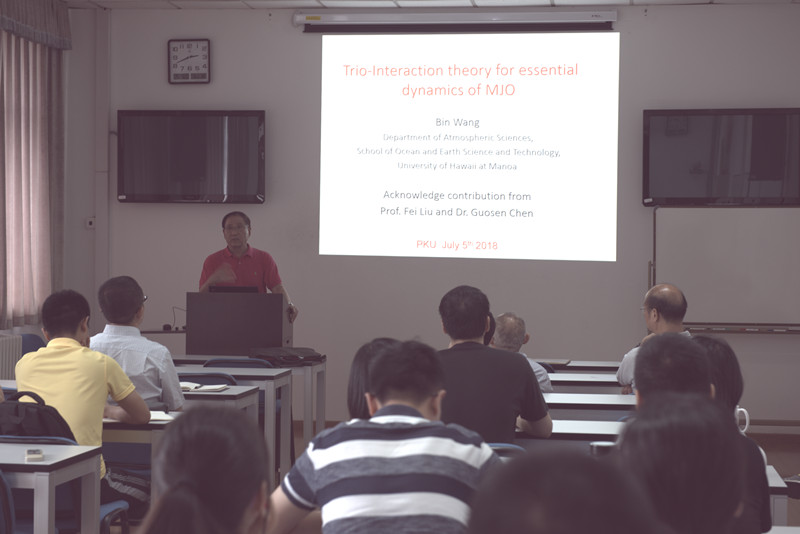主讲:Pro.Bin Wang
时间:2018年7月5日(周四)14:30-16:00
地点:物理楼北547
主持/联系:胡永云
摘要:
Understanding the origin and propagation of the Madden-Julian Oscillation (MJO) has eluded scientists for decades. We have recently advanced a general theoretical model for essential dynamics of MJO:The trio-interaction among (convective and radiative) heating, moisture, and (wave and boundary layer) dynamics. The model can accommodate variety of simplified convective parametrization schemes. The major existing theoretical models proposed thus far are special or simplified forms of the general theoretical model.
With the general theoretical model, we show that the trio-interaction mode reproduces robust large-scale characteristics of the observed MJO, including the coupled Kelvin-Rossby wave structure, slow eastward propagation (~5 m/s) over warm pool, the preferred planetary (zonal) scale, the boundary layer (BL) low pressure preceding major convection, and amplification/decay over warm/cold sea surface temperature (SST) regions. The trio-interaction theory elaborates important roles of four convective feedback processes, i.e., the BL convergence feedback, moisture feedback, wave feedback, and cloud-radiation feedback.
The theory uniquely reveals (a) the dependence of MJO structure on the form of heating schemes and (b) the dependence of MJO propagation on its zonal structural asymmetry. These results find firm support from observations and GCM simulations.Analysis of the 24 GCM’s simulations confirms that the MJO propagation speed depends on zonal structural asymmetry of the MJO. The models that simulate better three-dimensional dynamic and thermodynamic structures of MJO generally reproduce better eastward propagations. Based on the trio-interaction theory and GCM model results, we developed a suite of dynamics-oriented diagnostics that provide discrimination and assessment of MJO simulations. The new dynamics-oriented diagnostics help to evaluate whether a model produces eastward propagating MJO for the right reasons. This evaluation identifies a number of shortcomings in representing dynamical and heating processes relevant to the MJO simulation and reveals potential sources of the shortcomings.
The trio-interaction theory suggests that MJO propagation and instability are sensitive to cumulus parameterization schemes and MJO simulation may be improved if the shallow and congestus cloud heating and their interaction with BL moisture convergence can be enhanced in the GCMs. Using newly developed NUIST ESM, we confirmed the above assertion.

